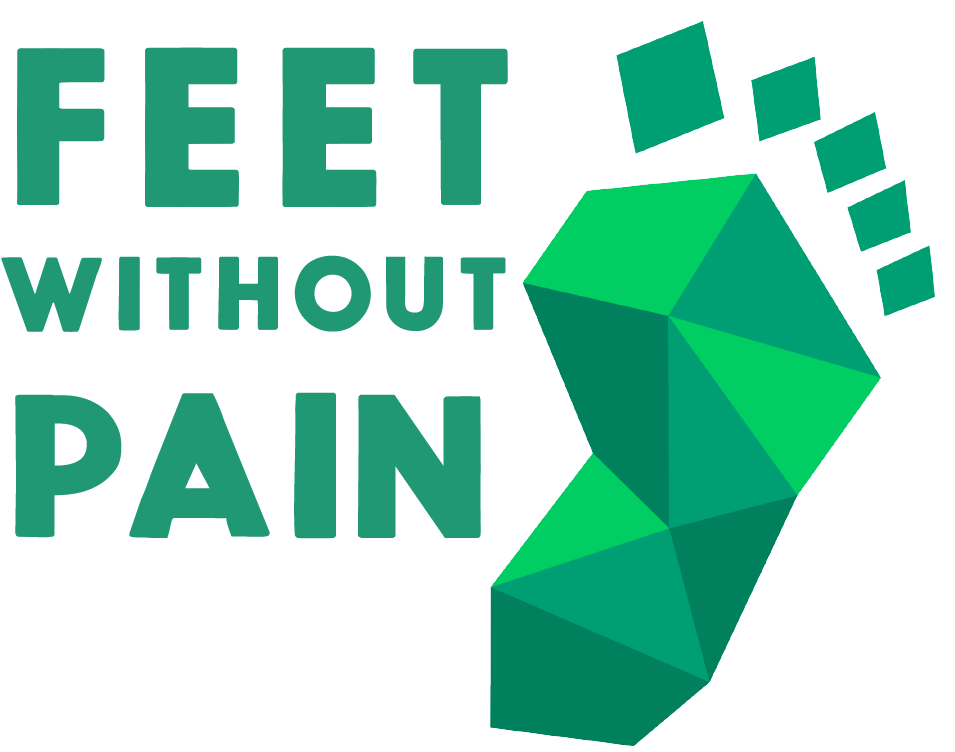Knee
Knee pain affects all age groups and is a broad subject, as it involves different causes and pathologies. The knee is the most unstable joint in the lower limb because it is easily injured. Stability depends on the proper functioning of various structures, such as menisci, ligaments, and especially muscles. In addition, knee alignment greatly influences this stability and vulnerability to injury.
A survey by Feet Without Pain in 2017 noted that about 69% of Brazilians over 18 years old experience pain in the knee joint. Among women, the pain index is higher than in men. While 70.5% of the female audience reported pain in the region, 65% of male respondents said they felt discomfort. Another interesting data is the high correlation between knee pain and respondents’ high body mass index (BMI).
CAUSES
Joint misalignment
One of the leading causes of knee injury is a misalignment of the joint. A knee with normal alignment has good load distribution between the femur and tibia. Also, it maintains good spacing between all structures. We can classify knee misalignment into two types: valgus and varus. In the first case, the knees are drawn in, and the lateral meniscus has a greater discharge. The knees are further apart in the second, and weight bearing is much greater on the medial meniscus. The load increase due to the compression of specific structures, and the stretching of others increases the chances of injury.
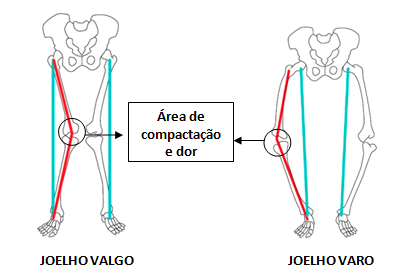
Sedentary lifestyle
In addition to stimulating weight gain, which overloads the knee, a sedentary lifestyle weakens the musculature and destabilizes the joint. A strong and flexible musculature protects the joint and helps to keep it in the correct position, absorbing overloads.
Overload
High-impact, high-intensity workouts and sports activities increase the risk of injury and premature wear and tear of joint cartilage. Training must be progressive, gradually increasing load and intensity so the knee structures are progressively prepared. It is important to remember the recovery periods: high-performance athletes who need to train a lot and do not respect this phase suffer from premature joint wear.
Previous Trauma
Without proper treatment, fractures, ligaments, and meniscal injuries weaken the musculature, make the knees more susceptible to new injuries, and can accelerate the wear process.
MAIN PATHOLOGIES THAT AFFECT THE KNEE
Several reasons can lead to pain in the knee area. They usually vary according to the age group of people. Depending on the region of pain, different structures may be damaged. Below are the most common knee injuries:
Patellofemoral pain syndrome
It is the wear and tear of the patellar cartilage. This syndrome generates pain in the front part of the knee, between the patella and the femur, and worsens with physical exercise. It mainly affects teenagers and young female adults. Furthermore, the disease is multifactorial; its development has several causes. Among them, those that most affect the knee are misalignment during movement, bone misalignment, excessive foot pronation, and joint overload.
Tibial apophysitis (Osgood-Schlatter lesion)
It is the inflammation of the anterior region of the tibia (the place where the patellar tendon is inserted).
It affects children between 12 and 15 years old due to the growth spurt. At this stage, the tendon becomes inflamed because the tension in the tissue increases due to rapid bone growth, which causes pain and swelling.
Tendinitis rotuliana (Rodilla de Saltador)
Según el estudio “, la inflamación del tendón rotuliano es muy común en quienes practican deportes que implican saltos y aterrizajes repetidos, aceleraciones y desaceleraciones rápidas y patadas, como: baloncesto, voleibol, fútbol, tenis, salto de altura y esgrima. Estos deportes exigen movimientos bruscos, que generan mucha tracción en el tendón y potencian la inflamación. Los síntomas más comunes son: dolor en el cuerpo del tendón, aumento del grosor, inflamación y dolor que mejora con la disminución de la actividad.
Patellar Tendonitis (Jumper’s Knee)
According to the study, “Patellar Tendinitis: pathology and results of treatment”, inflammation of the patellar tendon is widespread in those who practice sports that involve repeated jumps and landings, rapid acceleration and deceleration, and kicks, such as basketball, volleyball, soccer, tennis, high jump, and fencing. These sports demand sudden movements, which generate a lot of traction on the tendon and boost inflammation. The most common symptoms are pain in the body of the tendon, increased thickness, and swelling that improves with decreased activity.
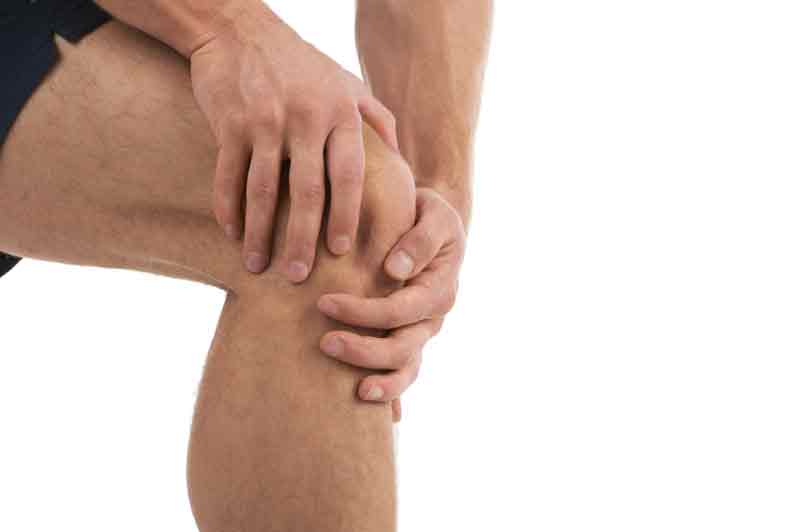
Bursitis
Bursae are tiny, fluid-filled sacs that reduce friction between bones, muscles, tendons, or ligaments. There is a multitude of them in the body. For example, the knee contains several bursae due to the numerous nearby structures. However, they often inflame – a factor that generates bursitis. Symptoms are pain and swelling, and it is usual to feel a small nodule in the region.
PREVENTION AND TREATMENT
Each type of injury follows a specific treatment. In more severe cases, with tissue rupture, surgery may be required. In less extensive and more chronic injuries, some actions can be taken to improve existing pain and, mainly, to prevent the damage from worsening.
Regular physical activity and weight: Decreasing the affected joint’s load should be the first measure. The easiest way to relieve your knees is to lower your weight and reduce your time standing or training. Remembering that the objective is not to stop practicing the activity but to encourage the practice without harming the body;
Biomechanical correction: correcting the joint alignment is significant to avoid overloading the knee structures. The knee in valgus (inwards) or varus (outwards) worsens the fit between the bones, which may lead to increased pressure, traction, or joint friction;
Neuromuscular Electrical Stimulation (NMES): A resource well used to strengthen muscles is neuromuscular electrical stimulation (NMES). It can prevent tissue mass loss through devices that drive muscle contraction. When knee immobilization is necessary and when associated with voluntary muscle contraction, this technique enhances strength gain;
Cryotherapy: the application of ice is a resource widely used for pain relief. The analgesic and anti-inflammatory effect, combined with its easy access, make ice one of the most used resources to alleviate discomfort;
Kinesio taping: also known as adhesive elastic bandage, is one of the favorite physiotherapeutic techniques of physical activity practitioners. Depending on how it’s applied, it can align and stabilize joints without restricting movement;
Knee brace: It is equipment that helps stabilize the knee joint better. It can be used during physical activities or even throughout the day. It is essential to check the compression it is causing so as not to harm local circulation, as this can increase pain;
Orthopedic Insoles: Insoles are widely used to treat knee pain. Some factors explain why they are the leading solutions for discomfort, such as the ability to help joint alignment, improve cushioning when stepping on the feet and avoid overloading the knees;
PRP (Platelet-Rich Plasma): is the application of a liquid extracted from the blood, with a high concentration of platelets (healing cells), inside the knee joint. Only doctors can perform this invasive technique, which is highly used for the treatment of knee pain;
Infiltration is a medical procedure that applies corticosteroids, anesthetics, or hyaluronic acid to treat injuries and inflammation or reduce pain. Its effect is often immediate. However, some studies reveal the degradation of knee structures in patients who use the method recurrently;
Surgery: There is a multitude of surgeries that can be performed on the knee. There are minimally incisive surgeries, such as arthroscopy, for example, which is surgery with the aid of a microcamera inserted inside the joint. Another type is arthroplasty, in which there is joint replacement by an orthopedic prosthesis.
CUSTOM SHOES AND INSOLES FEET WITHOUT PAIN® FOR KNEE PAIN
Feet Without Pain custom-made insoles provide realignment of the feet and ankles, preventing misalignment in the knees. In addition, they promote greater cushioning as they redistribute pressure more efficiently on the feet and ankles, reducing the impact that will reach the knees.
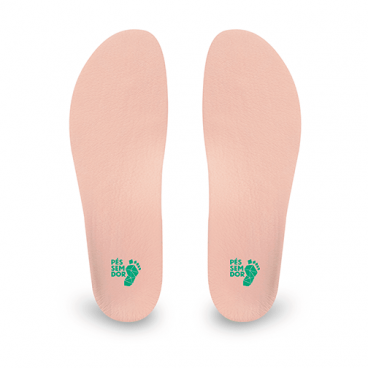
Bespoke shoes are made under the perfect measurements of your foot. With this, you get a highly stable and comfortable shoe on your foot, which is essential for anyone with knee pain.
As is known, those with pain in their knees should avoid wearing high-heeled and very rigid shoes. Therefore, Feet Without Pain custom-made shoes have a 3D printed sole, which offers excellent flexibility, stability, and good impact absorption.
The insoles and shoes are made with 3D technology and millimetric digital precision, with the experts at Feet Without Pain after a free evaluation of the feet, ankles, and knees. See now all its benefits:
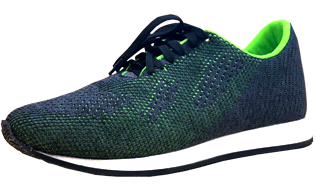
- Elimination or reduction of pain;
- Injury prevention;
- Increased comfort;
- Perfect fit;
- More time standing without pain;
- Prevention of pathology progression;
- Improved impact damping;
- Improved sports performance.
FOOTWEAR IN GENERAL
Generally, it would be best to opt for shoes with greater cushioning to avoid overloads, such as Feet Without Pain bespoke shoes. It is known that high-heeled shoes modify the biomechanics of stepping and leave the knee with greater joint pressure, which may aggravate existing injuries or generate new inflammations. In addition, high heels make the foot more unstable, increasing the risk of knee misalignment.
Women who need to wear dress shoes for work must wear comfortable shoes during pain peaks. Men can look for dress shoes with more cushioning soles. However, it is necessary to pay attention to the wear and tear of shoes, as they can be one of the causes of knee joint misalignment.
SPORTS
Some research shows that about 55% of sports injuries are related to the knee. The rate may vary according to the sport practiced due to the specific movements performed in each activity. Injuries are usually associated with overtraining (excessive training load), especially in pathologies such as patellar tendinitis and patellofemoral pain.
It is recommended that every practice of physical exercise be assisted appropriately. The support of a trainer is essential to prevent injuries. It is believed that most of them could be avoided by correcting the sporting gesture and ideal muscular preparation. Progressive training is critical when starting a new sport.
Before starting any activity, remember to warm up. Increasing blood flow to the muscles that will be used helps to activate the musculature, making it more prepared for work. In addition, with more willing musculature, the joints are more protected from instabilities and misalignments. Cooling down is also essential for muscle recovery, as it helps to clear the buildup of lactic acid. This substance causes muscle soreness and is produced by the body when there is excessive effort.
TIPS AND CURIOSITIES
The guidelines will depend on the cause of the pain. But, in general, some measures can be taken in order to ease the discomfort and avoid further injuries. See below:
Ice application
Ice should be used when the pain is more intense and the local temperature increases. Despite ice not solving the problem causing the injury, its application for 15 to 20 minutes relieves pain immediately;
Rest
Reducing activities during pain episodes is important not only to allow the body to recover but also to prevent further injury. During the pain phases, our body can assume postures to try to protect itself and, consequently, cause harmful joint misalignment.
For muscle strengthening
Keeping the leg musculature strong and flexible helps protect the knee joint, as it will be more stable, preventing wear and tear between the structures. Below are some exercises to protect yourself from injuries:
Ball between the knees
Sitting down, place a ball (about 20 cm in diameter) between your knees. Squeeze it and hold the pressure for 10 seconds. Release slowly and repeat the exercise. Perform 3 sets of 10 repetitions, 3 times a week;
Knee extension
Sitting on a chair, straighten your knee by raising your foot until the whole leg is aligned. Return to the starting position slowly without dropping your foot. Do the exercise one foot at a time. Perform 3 sets of 10 repetitions with each knee, 3 times a week;
Squat
Start by sitting in a chair with your knees slightly apart, lean your body forward and lift. Sit down slowly and repeat the movement. Make sure that, during the movement, the knee does not deviate inwards. Perform 3 sets of 10 repetitions, 3 times a week;
Bridge
Lying on your back with your arms at your sides, bend your knees and place your feet on the floor. Raise your torso keeping your spine and pelvis in line with your knees. Stay in this position for 10 seconds, and then slowly lower yourself to the original position. Make sure your knees don’t bend in or out during the movement. Perform 3 sets of 10 repetitions, 3 times a week;
Remember that all pain must be taken care of and diagnosed correctly. Whenever the nuisance is persistent, look for a specialist so that he can indicate the best treatment.
FREQUENTLY ASKED QUESTIONS (FAQs)

How to purchase your custom shoe or insole?
It’s fast and easy! Schedule a free evaluation of your feet with our specialists to buy your custom-made shoe.
Call, send a message to WhatsApp at 4003-8883, or visit: www.pessemdor.com.br/agendamento.
How does the evaluation work?
Upon arriving at a Feet Without Pain branch office, you will be received by a foot, ankle, and knee specialist, who will then fill out a registration form and ask some questions about your pain. Next, the assessment of the feet begins.
The specialist will examine your feet to understand your foot pains and complaints. Then, using the high-precision 3D scanner device, the specialist captures your feet’ measurements.
We are the only company with a 3D scanner for designing custom shoes. First, with the measurements of your feet, a mold is created using 3D printers, and after that, we start making your shoe.
How long does it take for the shoes and insoles to be ready?
Feet Without Pain produces custom-made shoes in up to 3 days; then, they are sent to your home free of charge!
Is the evaluation free?
Our assessment is completely free! We perform a complete analysis of your feet and legs, and you pay nothing for it!
Do we accept medical insurance?
We do not work with insurance because our assessment is completely free! But you can check if your plan somehow refunds you regarding the shoes!
EXTERNAL LINKS
1) Cisto de Baker | Manual MSD
2) Patellar Tendinitis: Pathology and Results of Treatment | Acta Orthopaedica Scandinavica
4) Effects of neuromuscular electric stimulation during immobilization of mechanical properties of skeletal muscles | Revista Brasileira de Medicina do Esporte
